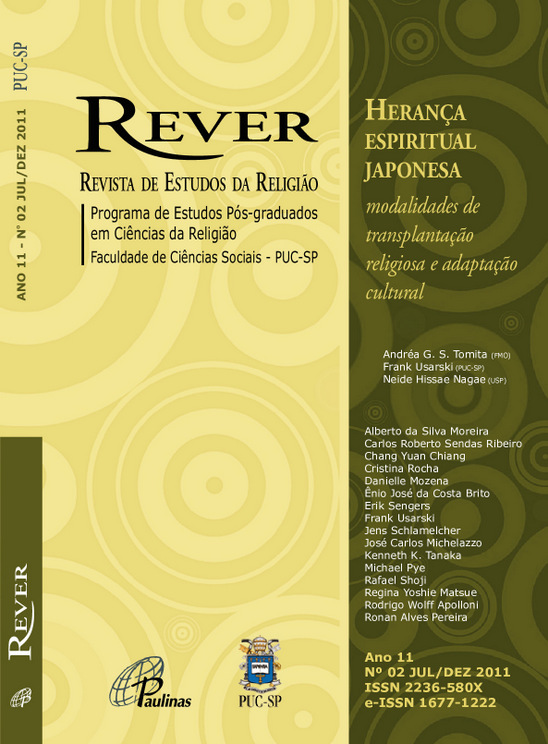Símbolos arcaicos, mágicos e religiosos em um cartaz da revolução cultural chinesa
Palavras-chave:
Revolução Cultural Chinesa, Simbolismo Religioso Chinês, Teoria do Cartaz, Leitura ImagéticaResumo
O artigo investiga a presença de elementos simbólicos, muitos deles associados ao pensamento religioso chinês, em um cartaz da Revolução Cultural Chinesa. Para tanto, utiliza uma metodologia que associa diferentes áreas do conhecimento: Estudos Chineses (dentro dos quais, Estudos da Religiosidade Chinesa), Língua Chinesa e os símbolos a ela associados, Simbolismo, História, Teoria do Cartaz e Sociologia da Imagem. A aproximação em relação à temática chinesa no cartaz passou por um esforço de tradução e análise do texto escrito que o compõe. Para se aproximar de elementos da História, cultura e simbolismo religioso sínico presentes na peça de propaganda, utilizaram-se trabalhos de scholars como M. Granet, A. Cheng (Escolas de Pensamento, Simbolismo Religioso), K. Stevens (Religiosidade Popular e Iconografia Religiosa) e J. Spence (História), bem como obras literárias e cinematográficas chinesas. No que respeita aos símbolos (em seu caráter universal), ajudaram as observações de M. Eliade. Em relação aos aspectos associados especificamente aos cartazes, apelou-se a L. Gervereau (História), A. Moles (Teoria do Cartaz) e V. Flusser (Sociologia da Imagem; Teoria da Leitura Imagética). Com base no cruzamento dos referenciais teóricos, demonstra-se que a intelligentsia da Revolução Cultural utilizou símbolos arcaicos – religiosos e políticos – em peças de propaganda devotadas a promover um discurso de destruição e substituição dos antigos valores.Métricas
Carregando Métricas ...
Downloads
Como Citar
Apolloni, R. W., & Chiang, C. Y. (2012). Símbolos arcaicos, mágicos e religiosos em um cartaz da revolução cultural chinesa. REVER: Revista De Estudos Da Religião, 11(2), 195–220. Recuperado de https://revistas.pucsp.br/index.php/rever/article/view/8157
Edição
Seção
Seção Temática
Licença

Este trabalho está licenciado sob uma licença Creative Commons Attribution-NonCommercial 4.0 International License.
Autores que publicam nesta revista concordam com os seguintes termos:
- Autores mantém os direitos autorais e concedem à revista o direito de primeira publicação, com o trabalho simultaneamente licenciado sob a Licença Attribution-NonCommercial 4.0 International, que permite o compartilhamento do trabalho com reconhecimento da autoria e publicação inicial nesta revista.
- Autores têm autorização para assumir contratos adicionais separadamente, para distribuição não exclusiva da versão do trabalho publicada nesta revista (ex.: publicar em repositório institucional ou como capítulo de livro), com reconhecimento de autoria e publicação inicial nesta revista.


